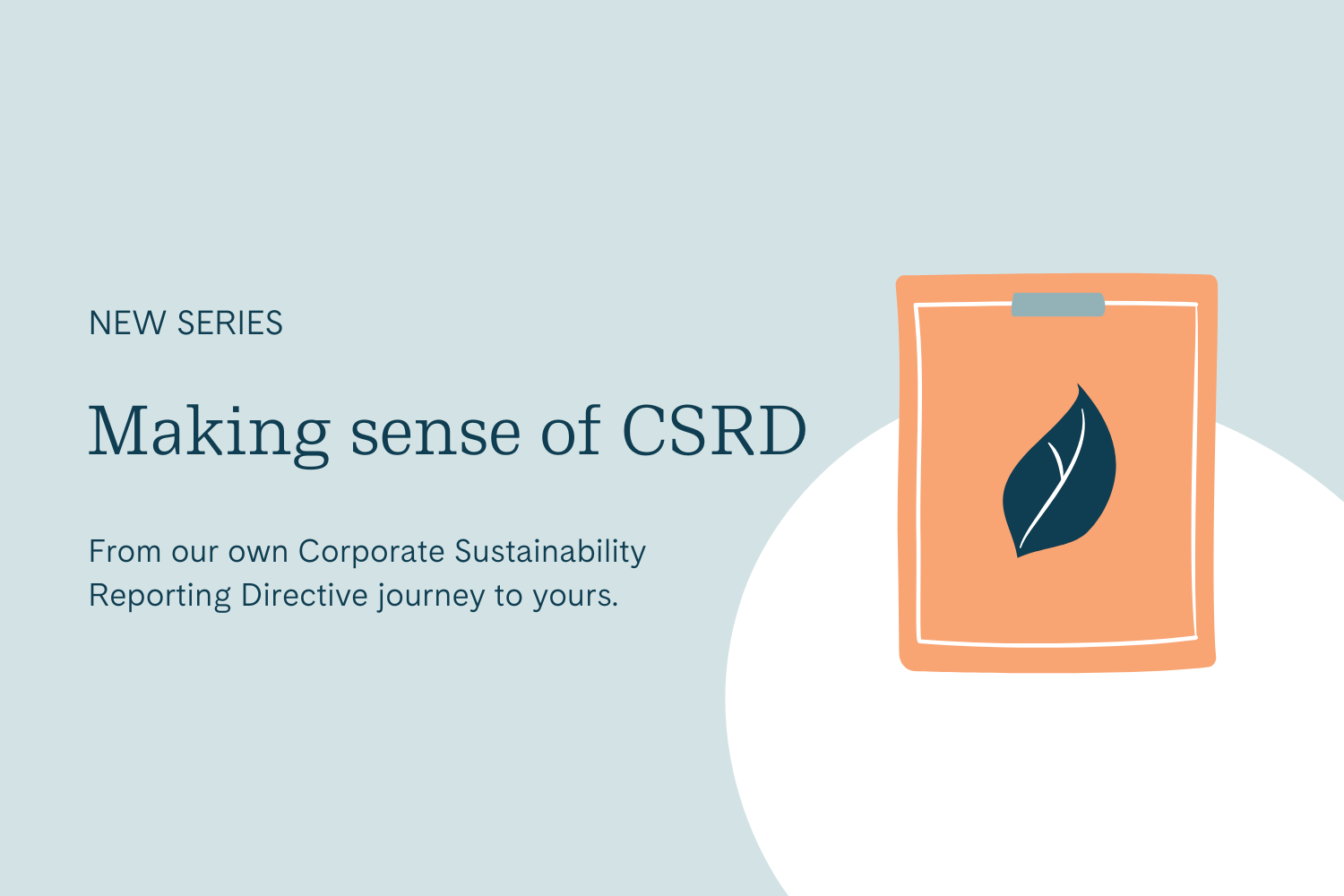The first CSRD-compliant reports are due to be published in 2025, and many companies are in the process of gathering the needed data. It is a hefty job with over 1,100 data points to report, many of which require new data from the company’s value chain. However, many companies face the challenge of outdated ESG data management practices and tools. The digitalization and automation of these processes have often been neglected due to other IT priorities.
It is now high time to start modernizing ESG data management, even if the renewal is not ready for the 2024 report. Alongside the actual reporting, data is also needed for developing corporate sustainability, especially once external reporting-related requirements have been met. The purpose of CSRD is ultimately to enable the transition to sustainable business models, which calls for a clear and data-driven understanding of the current state and development needs of corporate sustainability. This is not possible if there are problems with the quality and timeliness of the data. On the other hand, if the information systems and processes supporting ESG data management are in good shape, ESG data can be used to identify new sustainable business opportunities and drive business growth.
Data systems’ potential benefits for ESG data management:
- Real-time data collection from business processes
- Standardisation of data and key performance indicators
- Data integration
- Better transparency and traceability of data
- Model-based reporting
- Modern reporting and analytics functionalities
- Stakeholder group inclusion (e.g. through an external user interface)
- Cloud service scalability and global accessibility
- Cost savings enabled by automation and more efficient data sharing
Overall architecture as a starting point
Information systems, as their name implies, exist to help manage information. They help gather, process, and refine raw data into usable formats for enterprise management, reporting, and decision-making. ESG management does not materially differ from managing any other information, but the challenge lies in the systemic nature of the information. Sustainable development and its areas span across all corporate operations from product and service design to manufacturing and use of the end products. To estimate, report, and improve the impacts of their operations, companies must collect data across all areas, including their own business processes, supply chains, and product usage. Since ESG data must be collected from all areas of operations, information management solutions should not be approached in isolation. Any new solutions should eventually be integrated with existing systems, such as ERP, management systems, supply chain management systems, and HR systems. While various systems provide relevant data for different aspects of the business, all the information should be consolidated into one source of truth. Creating this unified structure requires a systematic approach that accounts for the entire enterprise architecture.
Individual solutions may not suffice
Digitalising sustainability information should not be started by rushing into buying a new ESG application. New ESG solutions have lately started to pop up at an increasing pace, many of which are extensions to existing product families (e.g. Microsoft Cloud for Sustainability, IBM Envizi, SAP Sustainability Footprint Management, Salesforce Sustainability Cloud). At least for the moment, all solutions are not quite complete. Some may, for example, entail very polished features for the inventory of greenhouse gases but remain incomplete in other areas. Without a clear picture of the actual needs of corporate ESG data management, one can end up paying for the wrong things if sales pitches are not taken with a pinch of salt.
This is why digitalizing ESG data should begin with the same step as CSRD-compliant reporting: a current state assessment. While a double materiality assessment identifies key sustainability topics for the company, evaluating the current state of ESG data management highlights pain points, needs, and areas for improvement. By engaging internal experts through interviews or workshops, companies can better understand their primary challenges in data collection and reporting, while also gathering insights for future improvements. Identifying both functional and technical requirements establishes a clear starting point for development.
Target state first, execution next
Once the current state is understood, the next step is to define the target state. This begins with developing a high-level vision of what ESG data management and reporting should look like in the future. It’s not necessary to know exactly how the vision will be implemented at this stage, but the target state should be detailed enough to assess the required development areas and identify possible solutions to achieve them. Defining the data collection and reporting processes, outlining the overall architecture, and identifying must-have functionalities will also facilitate productive discussions with potential vendors and help evaluate how different solutions can support reaching the target.
Clearly defined current and target states combined with a market study of available ESG solutions provide a good starting point for decision-making and continuing the planning process. These steps help answer key questions: Why do we need this? What are we aiming for? What are our available options? Addressing these questions enables an informed decision on whether new tools are necessary or if the target state can be achieved by developing existing systems and operations. If the decision is made to procure a new ESG application, the procurement process can be initiated using the detailed descriptions of the current and target states as a guide.
It’s important to remember that systems alone do not create value; they enable meaningful changes in how we operate. A clear and well-defined target state for ESG data management and reporting is essential, as it drives the procurement and implementation of the right tools. Systems and digital tools are simply means to an end, not the end goal itself.


